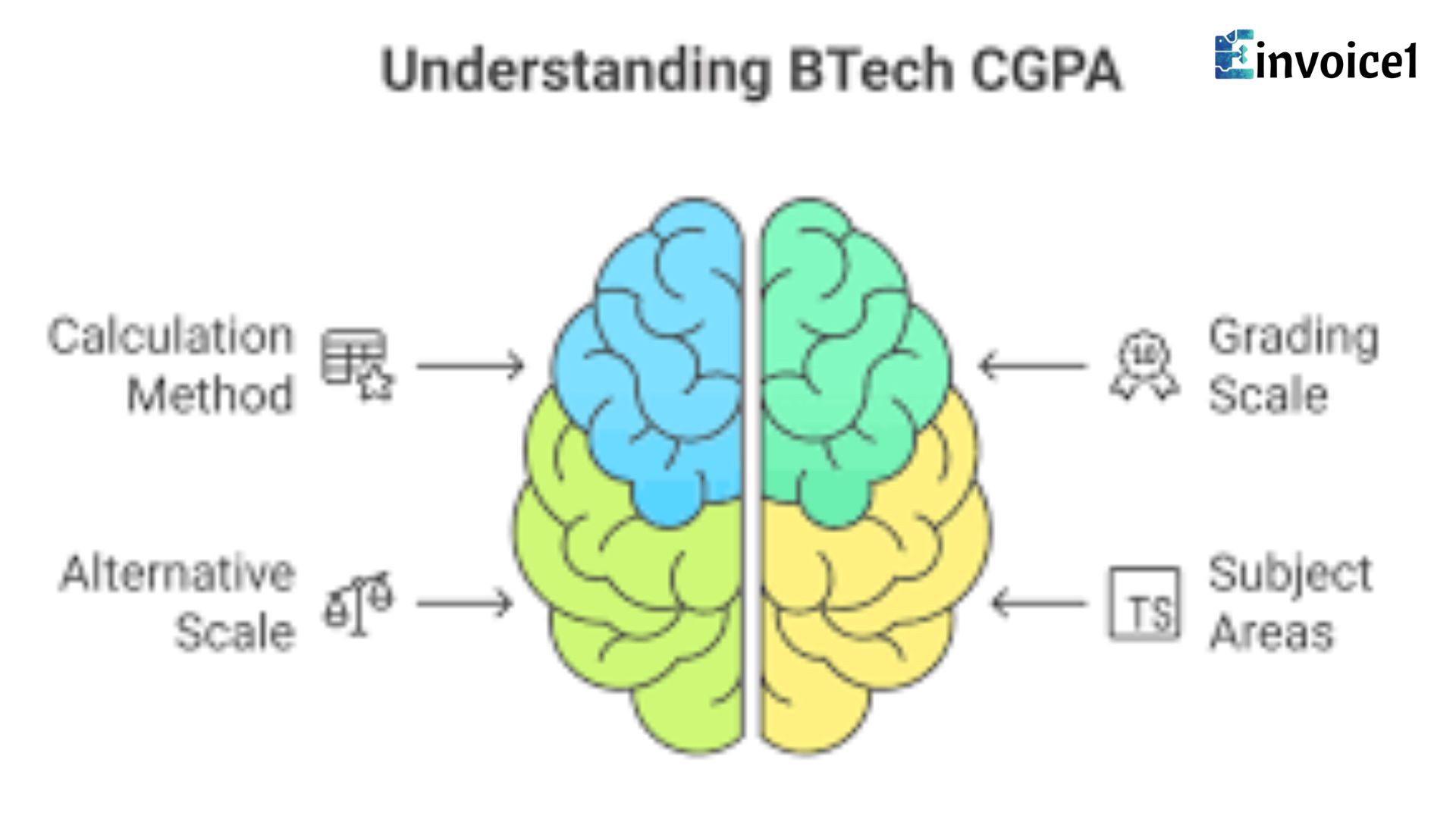Students are evaluated on continuous basis in a 4 year Engineering degree consisting of semester exams, Internals, Laboratory work,and Project work. Such assessments affect the cumulative level of merit and are factored into the Cumulative Student Performance (CSP). Knowing how to calculate CGPA is important not just for monitoring your progress but also to decide whether you are eligible for further studies, placements, scholarship, etc. However, most students are obsessed with marks, but CGPA is the scaling parameter that represents the consistency and user has performed over the B.Tech course. How to Calculate CGPA in B.Tech?
By CGPA, we mean Cumulative Grade Point Average. Unlike percent systems, which grade only in whole numbers, GPA systems can report grades using a smaller measurement increment (0.1) and between a narrower range (such as 0 to 4ths of the system used by colleges and universities)!!! Unlike the Indian CGPA system, there is no specific provision for additional marks due to high or low relative performance.!!! Accessories A Sophisticated Leather & Steel Office Backpack This new backpack from Wool & Oak, packed with pockets, will make sure your keys never tear another hole in your pants pocket during one of your requirements that you attend this weird place called “office”. Go Now!!! Handcrafted Black Genuine Leather Aviator.s This aviator-style face mask is composed from two premium genuine leather halfs with soft interior liner and an adjustable headband for comfort. Check How to Calculate CGPA in B.Tech.
The performance of each semester is initially computed in the form of SGPA which is later converted into CGPA. Conversion of marks into grade points is depending on the grading system of the university and there are certain cut-off marks which decides the grades like O (Outstanding), A+, A, B+, B, C and F etc., Each internal marking has corresponding numerical value to calculate CGPA.
There are a few steps to calculate CGPA., First is knowing the credit system in B.Tech. Quantitative distribution of credits: The number of credits is allocated to each course/subject per semester on the basis of lecture hours, practicals and the overall workload per subject/course. For example, a theory class could be worth four credits, making the lab two and the project 3. Such credits constitute weights in the calculation of the CGPA. A student performing well in a high-credit course will have more effect on the CGPA (and % or SPI) than in a low-credit course. Do you know How to Calculate CGPA in B.Tech?
Semester Grade Point Average (SGPA) is calculated by using the formula:
SGPA = (ΣGrade Points × Credits)/Total Credits in the Semester
This is the system of points based on the grade you obtained in each subject. For instance, if a student has secured an ‘A’ grade in a subject of 4 credits and the institute has 9 reading points for the grade ‘A’, then the contribution to SGPA will be 36 ( = number of credits in the subject × grading point). This is repeated for each of the subjects of the semester and the sum of all these comes to a number, then this number should be divide by the total credits to get SGPA.
After determining the SGPA of each semester, the CGPA is obtained by:
CGPA = (Σ (SGPA of semester × Credits of the semester))/(Total Credits)
It emphasizes higher-credit-hour hours’ semesters in your cumulative by making those scores “count” more. E.g., if the credit at first semester is 20 with SGPA of 8 and for second semester it is 22 with an SGPA of 9 then CGPA after two semesters will be,
CGPA = ((8 × 20) + (9× 22)) / (20 + 22)
CGPA = (160 + 198) / 42
CGPA = 358 / 42 ≈ 8.52
Several B.Tech colleges have their own conversion scale to change CGPA into percentage marks for placement or further studies. One of the conversion formulas generally applied in the Indian context is:
Percentage = CGPA × 9.5
So a CGPA of 8.52 would all in all be about 81.0%. Students need to confirm with their university as conversion rates may differ.
Not forgetting that carry over soiled CGPA. I see these are falling under most of the systems, if a student is given an ‘F’ grade for a subject the GP assigned will indeed be 0. Even if you clear your re-examination, your updated gossip point will replace 0 in the CGPA. It promotes students in clear all papers while maintaining a consistent standard of academic performance.
Some labs or internships are also with CGPA credit hours. For instance an industrial internship or final year major project may hold too many credits. This greatly changes the CGPA. Making it mandatory for students to concentrate on both theory exams as well as practicals, as both contribute towards the final CGPA. Here’s you can know How to Calculate CGPA in B.Tech.
In some degree-granting colleges, they calculate CGPAs for each semester, where in others and all other cases the average is calculated from the 1st Semester. It isa new registration system for registering including CGPA updation after semester results are announced. In such a system, internal exams or midterms and project presentations/evaluations can be added on to the CGPA gradually. No matter under whatever Credit Rating System (CRS), all what matters is: CGPA in the weighted average of grade points over the total credits.
Calculating CGPA is educational, but most students refer to online CGPA calculators available for different universities. These calculators ask for the number of credits and earned grade points in each subject. Handy though this is, it is important to know what the calculation behind this means, particularly if you are academic planning. Understanding the calculation of the common CGPA, students can plan for their classes with high credits, find out weaknesses, and anticipate consequences of future grades.
There are many reasons to keep your CGPA high while you study for your B.Tech. For campus drives, eligibility criteria are usually set on CGPA. Scholarships and academic prizes, too, would generally rely on the CGPA as the predominant measure. Even for admissions to post-graduate programmes such as M.Tech, MBA etc., the following aggregate is looked at. So, knowing how CGPA is calculated helps students have realistic goals and effectively manage their academic progress.
Finally, it’s also worth considering the impact of grading policies and rounding policies. Also schools may round GPA to 2 decimal places, some most likely truncate the value. Even small variations can fall on either side of competitive awards or recruiting cutoffs. Students must consult the Institutions to confirm rounding rules and thus keep records to match.
For foreign students who want to study abroad, knowingly and unknowingly understanding CGPA conversion is very important. A few universities in the United States, Canada, and elsewhere use the equivalent percentage value or provide an applicable grade based on a 4.0 GPA scale (also known as a prior-aughts standard). Proper Conversion of Indian CGPA into International GPA Scales for Transparent Judgment and Preventing Misinterpretation at Admission Offices!
To sum up, CGPA in B.Tech is equivalent to your mark sheet, and you comprehend how they all are correlated with one another – credits, grade points and semester performance. The procedure involves good record keeping of grades, attention to credit weightings, and solid performance in all semesters. When students become proficient in how to calculate CGPA, it makes it easy for them to monitor their progress and take decisions on which electives, projects and exam strategy. After all, CGPA is not just a number but an actual depiction of sincerity, farsightedness, and relentless efforts that one put forth during the extremely demanding pursuit of B.Tech. Ultimately, CGPA is not about a digit; rather, it stands as testimony to unwavering dedication, meticulous planning, and sustained performance in the long haul of pursuing a B.Tech program.




